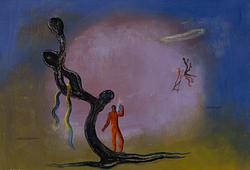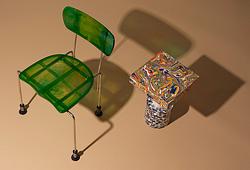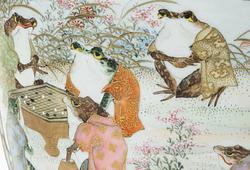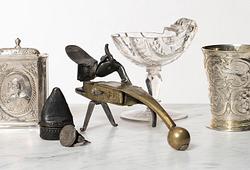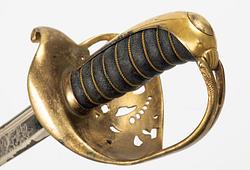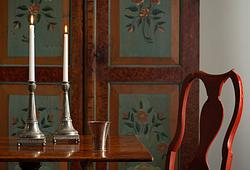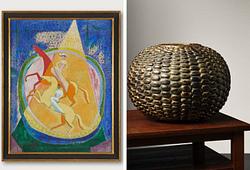Matta, antik Agra, norra Indien, ca 335 x 287 cm
Omkring 1890. Benvit botten med stor polykrom spaljé med blommor, s.k. "Shrub"-design. Benvit huvudbård med palmett- och bladranka.
Övrig information
Under 1600-talet, särskilt när kejsar Shah Jahan styrde (1628–1658), började mogulerna i Indien lägga stor vikt vid att avbilda blommor på ett naturtroget sätt i sina textilier och mattor. På vackra rubinröda bakgrunder vävdes rader av blommor som liljor, vallmor, nejlikor, tulpaner, violer och narcisser – ofta så detaljerade att man kunde känna igen arterna.
De här blomsterinspirerade mönstren förblev populära i flera hundra år. Med tiden började dock vävarna ta större konstnärliga friheter, vilket gjorde blommorna mindre verklighetstrogna och ibland svåra att känna igen.
Den matta som beskrivs här har ett mönster som påminner om de tidiga mogulmattorna, men istället för röd bakgrund har den en ljus, elfenbensfärgad grund. Blommorna är mindre och inte lika lätta att identifiera.
På 1800-talet blev det vanligt att väva liknande mattor i fängelserna i Agra och Lahore. Där skapades många mattor med liknande blommönster, men ofta med lite förändrade färger och detaljer.




